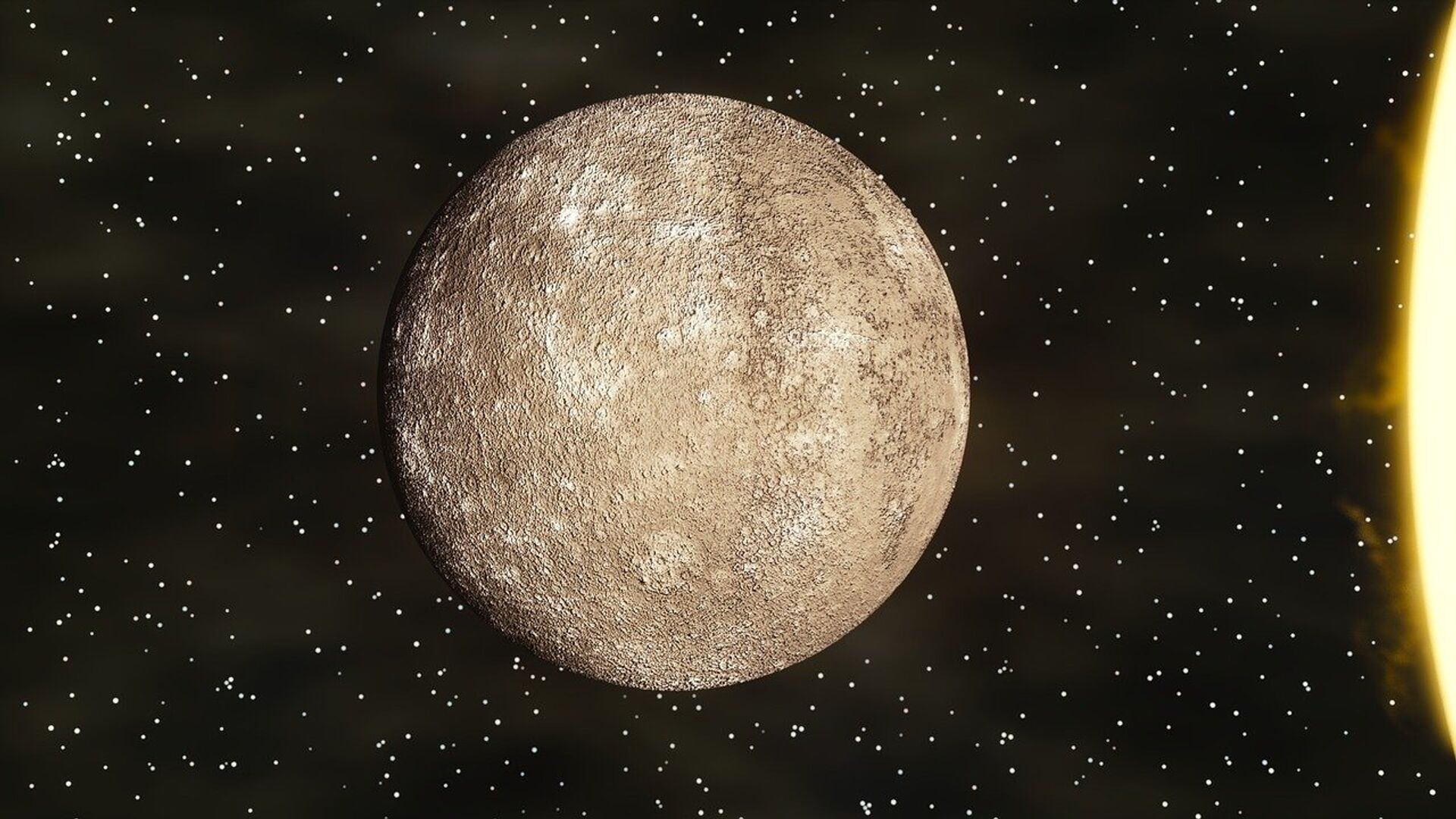https://sputnikglobe.com/20211003/bepicolombo-captures-stunning-first-image-of-mercury-during-flyby-1089614934.html
BepiColombo Captures Stunning First Image of Mercury During Flyby
BepiColombo Captures Stunning First Image of Mercury During Flyby
Sputnik International
Europe's mission to Mercury, in cooperation with Japan, attained its first glimpse of Mercury as the spacecraft swayed by the solar system's innermost planet... 03.10.2021, Sputnik International
2021-10-03T03:30+0000
2021-10-03T03:30+0000
2021-10-03T05:18+0000
european space agency (esa)
flyby
mercury
japan's aerospace exploration agency (jaxa)
bepicolombo
https://cdn1.img.sputnikglobe.com/img/104990/78/1049907820_0:0:1280:720_1920x0_80_0_0_7a51dd1dbc0a037f4c9340a8e888c5d4.jpg
Using the planet's gravity to bring the spacecraft to a lower velocity, the BepiColombo mission made the first of six flybys of Mercury at 11:34 p.m. GMT (7:34 p.m. EST) on Friday.The spacecraft's three monitoring cameras captured a low resolution black-and-white photo after swooping past Mercury at altitudes of under 200 kilometres (125 miles).The European Space Agency said in a Facebook post that the BepiColombo mission captured an image showing the Northern Hemisphere and Mercury's characteristic pock-marked features, when the spacecraft was about 2,418 kilometres away from the planet.Five further flybys are needed before BepiColombo is sufficiently slowed down to release ESA's Mercury Planetary Orbiter and JAXA's Mercury Magnetospheric Orbiter. The two probes will study Mercury's core and processes on its surface, as well as its magnetic sphere.BepiColombo is named after mathematician and engineer, Professor Giuseppe "Bepi" Colombo, who is credited for his contribution to our understanding of Mercury leading to the European Space Agency to name their cornerstone mission after him.
Sputnik International
feedback@sputniknews.com
+74956456601
MIA „Rossiya Segodnya“
2021
News
en_EN
Sputnik International
feedback@sputniknews.com
+74956456601
MIA „Rossiya Segodnya“
Sputnik International
feedback@sputniknews.com
+74956456601
MIA „Rossiya Segodnya“
european space agency (esa), flyby, mercury, japan's aerospace exploration agency (jaxa), bepicolombo
european space agency (esa), flyby, mercury, japan's aerospace exploration agency (jaxa), bepicolombo
BepiColombo Captures Stunning First Image of Mercury During Flyby
03:30 GMT 03.10.2021 (Updated: 05:18 GMT 03.10.2021) Europe's mission to Mercury, in cooperation with Japan, attained its first glimpse of Mercury as the spacecraft swayed by the solar system's innermost planet while on a mission to deliver two probes into orbit in 2025.
Using the planet's gravity to bring the spacecraft to a lower velocity, the
BepiColombo mission made the first of six flybys of Mercury at 11:34 p.m. GMT (7:34 p.m. EST) on Friday.
The spacecraft's
three monitoring cameras captured a low resolution black-and-white photo after swooping past Mercury at altitudes of under 200 kilometres (125 miles).
The European Space Agency said in a Facebook
post that the BepiColombo mission captured an image showing the Northern Hemisphere and Mercury's characteristic pock-marked features, when the spacecraft was about 2,418 kilometres away from the planet.
Five further flybys are needed before BepiColombo is sufficiently slowed down to release ESA's Mercury Planetary Orbiter and JAXA's Mercury Magnetospheric Orbiter. The two probes will study Mercury's core and processes on its surface, as well as its magnetic sphere.
BepiColombo is named after mathematician and engineer, Professor Giuseppe "Bepi" Colombo, who is credited for his contribution to our understanding of Mercury leading to the European Space Agency to name their cornerstone mission after him.

